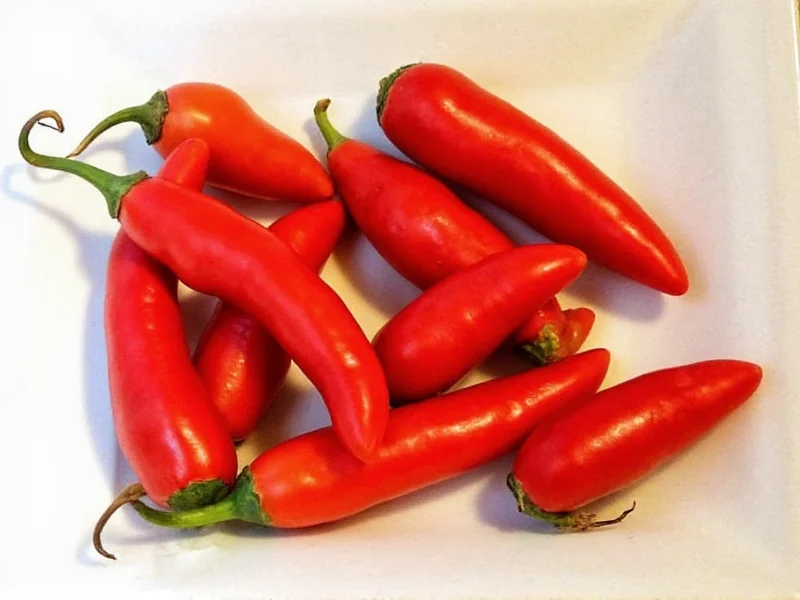Understanding Why Your Chili Became Too Spicy
Chili heat comes from capsaicin, the oil-based compound in peppers that triggers heat receptors. Unlike common belief, capsaicin isn't water-soluble—it binds to fats and oils. This explains why drinking water after eating spicy food often fails to help. When your chili turns out too hot, you're dealing with an excess of this oil-soluble compound that needs proper neutralization.
7 Proven Methods to Reduce Spiciness in Chili
These techniques work because they address capsaicin's chemical properties. Implement them individually or combine for maximum effect while preserving your chili's intended flavor profile.
1. Dairy Products: The Scientifically Backed Solution
Dairy contains casein, a protein that breaks capsaicin's bond with nerve receptors. This is why milk soothes spicy food better than water. For chili:
- Add 1/4 to 1/2 cup whole milk, heavy cream, or coconut milk per 4 servings
- Stir in 2-3 tablespoons sour cream or plain yogurt per serving
- Top with shredded cheese (cheddar works well)
Full-fat dairy works best since capsaicin is fat-soluble. Avoid boiling after adding dairy to prevent curdling.
2. Acidic Ingredients: pH Balancing Approach
Acids change how we perceive heat by altering pH levels. They don't eliminate capsaicin but create balance:
- Lime juice: 1-2 tablespoons per 4 servings
- Vinegar: 1 teaspoon apple cider vinegar
- Tomato paste: 2-3 tablespoons (adds sweetness too)
Add acids gradually while tasting—too much can make your chili taste sour. The citric acid in lime juice works particularly well with Southwestern flavors.
3. Dilution Method: Volume Adjustment Technique
Increasing overall volume reduces capsaicin concentration without altering chemistry:
| Ingredient | Amount per 4 Servings | Flavor Impact |
|---|---|---|
| Canned beans (kidney/pinto) | 1 can (15oz), drained | Minimal flavor change |
| Crushed tomatoes | 1 can (28oz) | Enhances tomato base |
| Beef/chicken broth | 1-2 cups | May require re-seasoning |
| Corn kernels | 1 cup | Sweetness balances heat |
4. Sugar and Sweet Elements: Perception Counteraction
Sweetness counteracts heat perception through sensory interaction:
- Granulated sugar: 1-2 teaspoons
- Honey or maple syrup: 1 teaspoon
- Grated carrots: 1/2 cup (adds natural sweetness)
- Canned corn: 1/2 cup (contains natural sugars)
Add sweet elements gradually—excess sugar creates undesirable flavor imbalances. Brown sugar adds complementary molasses notes to meat-based chilies.
5. Starchy Thickeners: Capsaicin Absorption
Certain starches absorb capsaicin while improving texture:
- Masa harina: 1-2 tablespoons (authentic thickener)
- Cornmeal: 1 tablespoon
- Crushed tortilla chips: small handful
Mix starches with cold water first to prevent clumping. Masa harina adds traditional Southwestern flavor while reducing heat.
6. Fats and Oils: Capsaicin Binding Solution
Since capsaicin is oil-soluble, additional fats can bind and distribute it:
- Avocado: diced topping (serving suggestion)
- Extra olive oil: 1-2 tablespoons
- Butter: 1-2 tablespoons (enhances richness)
Fats won't eliminate heat but redistribute it, making each bite less intensely spicy. Combine with dairy for synergistic effects.
7. Time and Temperature: Natural Mellowing Process
Heat perception decreases over time as flavors integrate:
- Refrigerate overnight: allows flavors to mellow
- Avoid prolonged high-heat cooking (intensifies heat)
- Cool completely before reheating gently
Many chili recipes actually taste better the next day as complex flavors develop and heat perception naturally decreases.
What NOT to Do When Fixing Spicy Chili
Avoid these common mistakes that worsen the situation:
- Adding more hot peppers—this increases capsaicin concentration
- Using excessive sugar—creates cloying, unbalanced flavor
- Boiling after adding dairy—causes curdling and texture issues
- Adding plain water—spreads capsaicin without neutralizing it
Preventing Overly Spicy Chili in Future Batches
Master these professional techniques to control heat levels from the start:
- Remove pepper seeds and white membranes (where most capsaicin resides)
- Add hot elements gradually, tasting as you cook
- Use pepper varieties with known Scoville ratings
- Create a "heat reservoir"—cook peppers separately to add incrementally
- Balance with sweet vegetables like sweet potatoes or bell peppers
When to Start Over: Recognizing Point of No Return
Sometimes chili becomes irredeemably spicy. Consider restarting if:
- You've added excessive amounts of pure capsaicin sources (habanero, ghost peppers)
- Multiple correction attempts have created flavor imbalances
- The chili has developed bitter notes from overcompensation
Remember that prevention is easier than correction—always build heat gradually in future batches.











 浙公网安备
33010002000092号
浙公网安备
33010002000092号 浙B2-20120091-4
浙B2-20120091-4